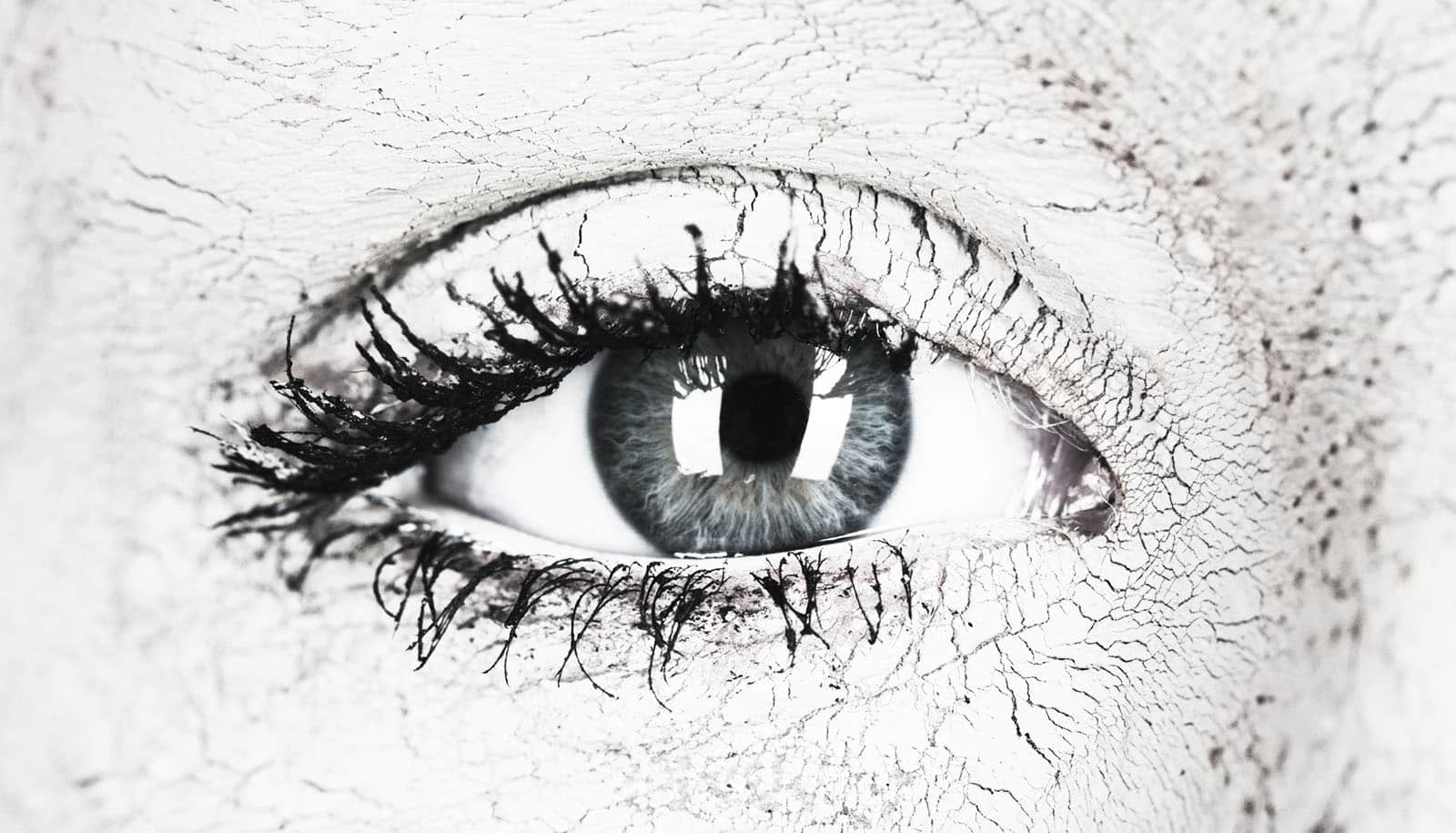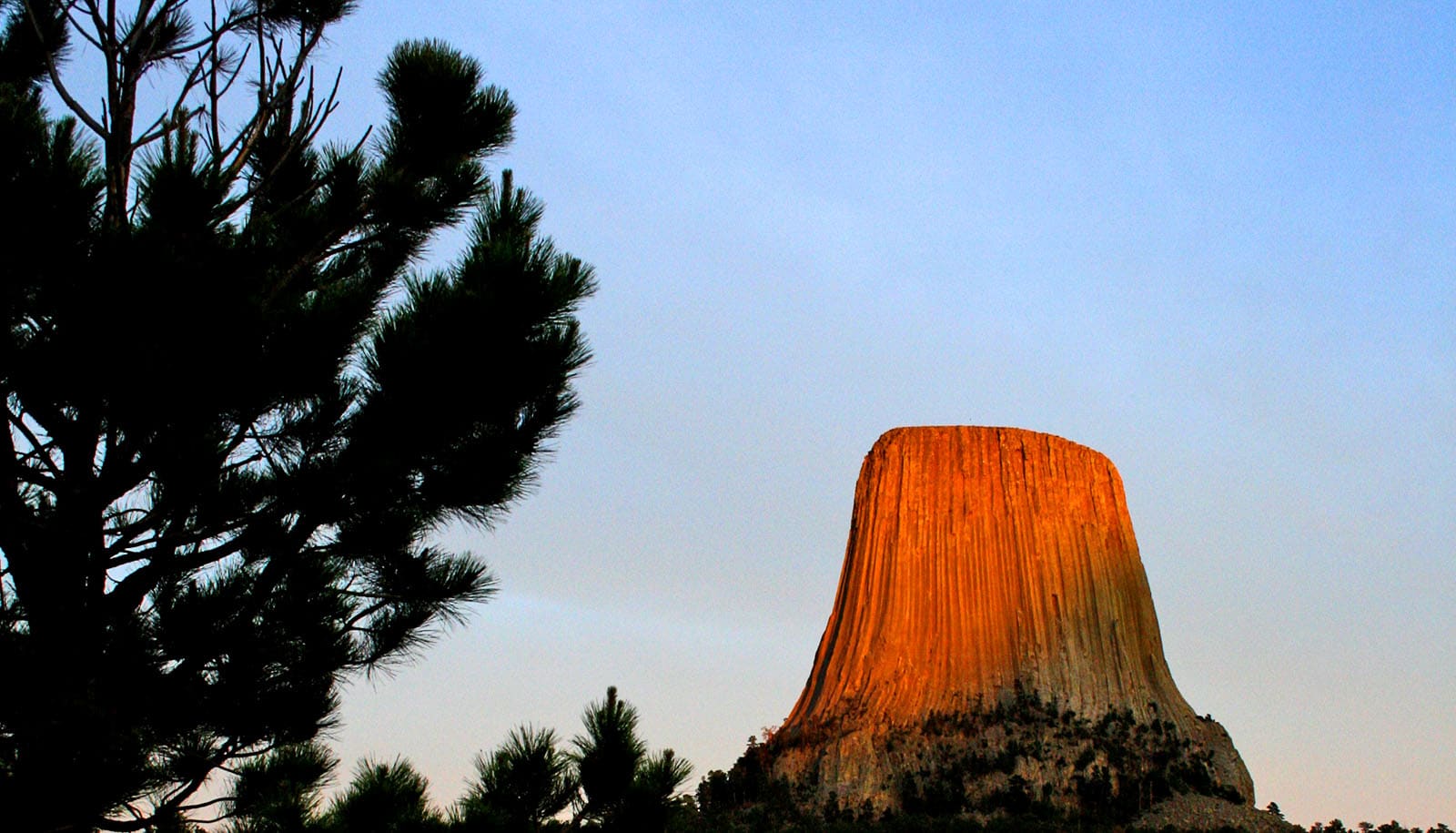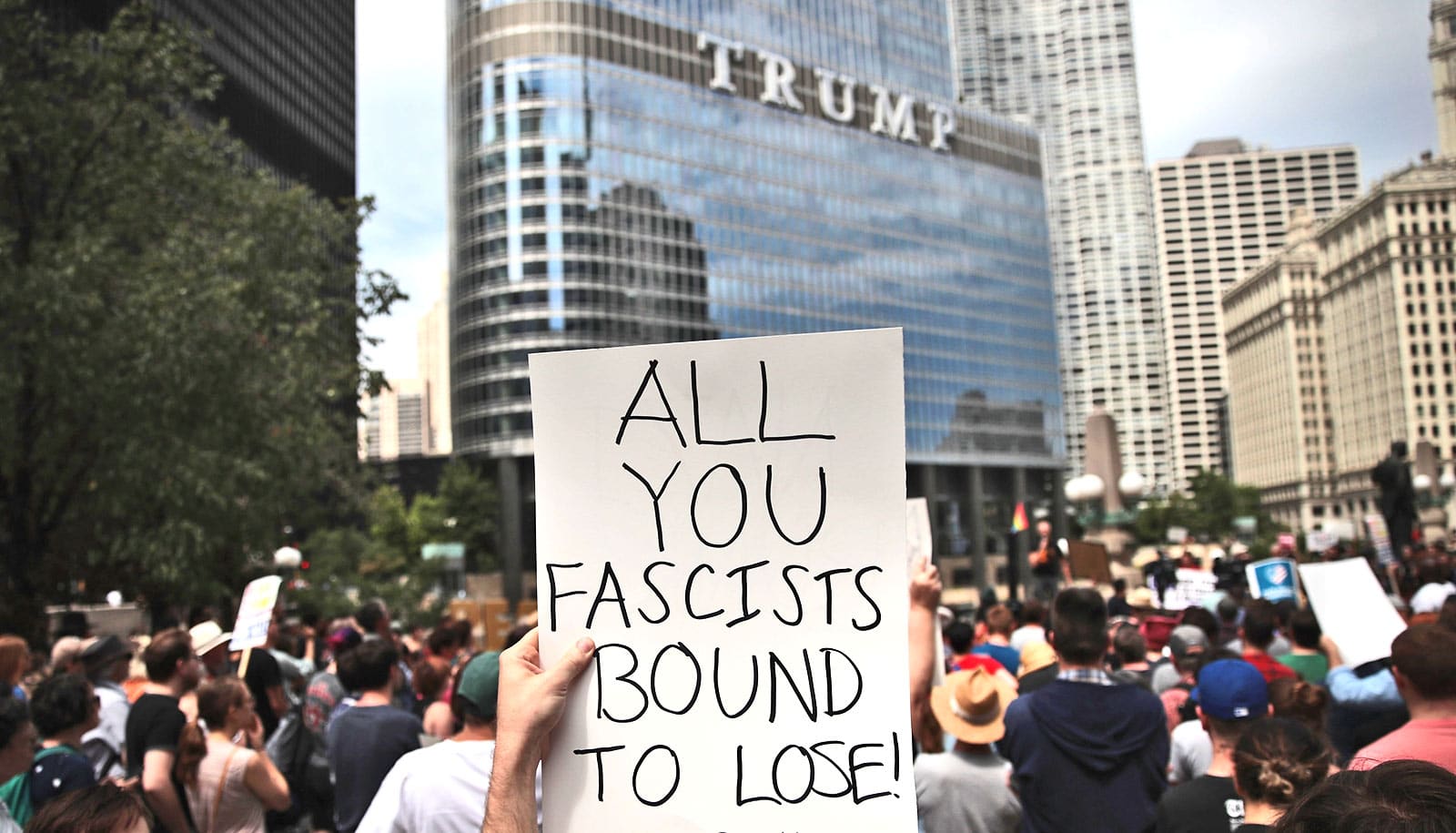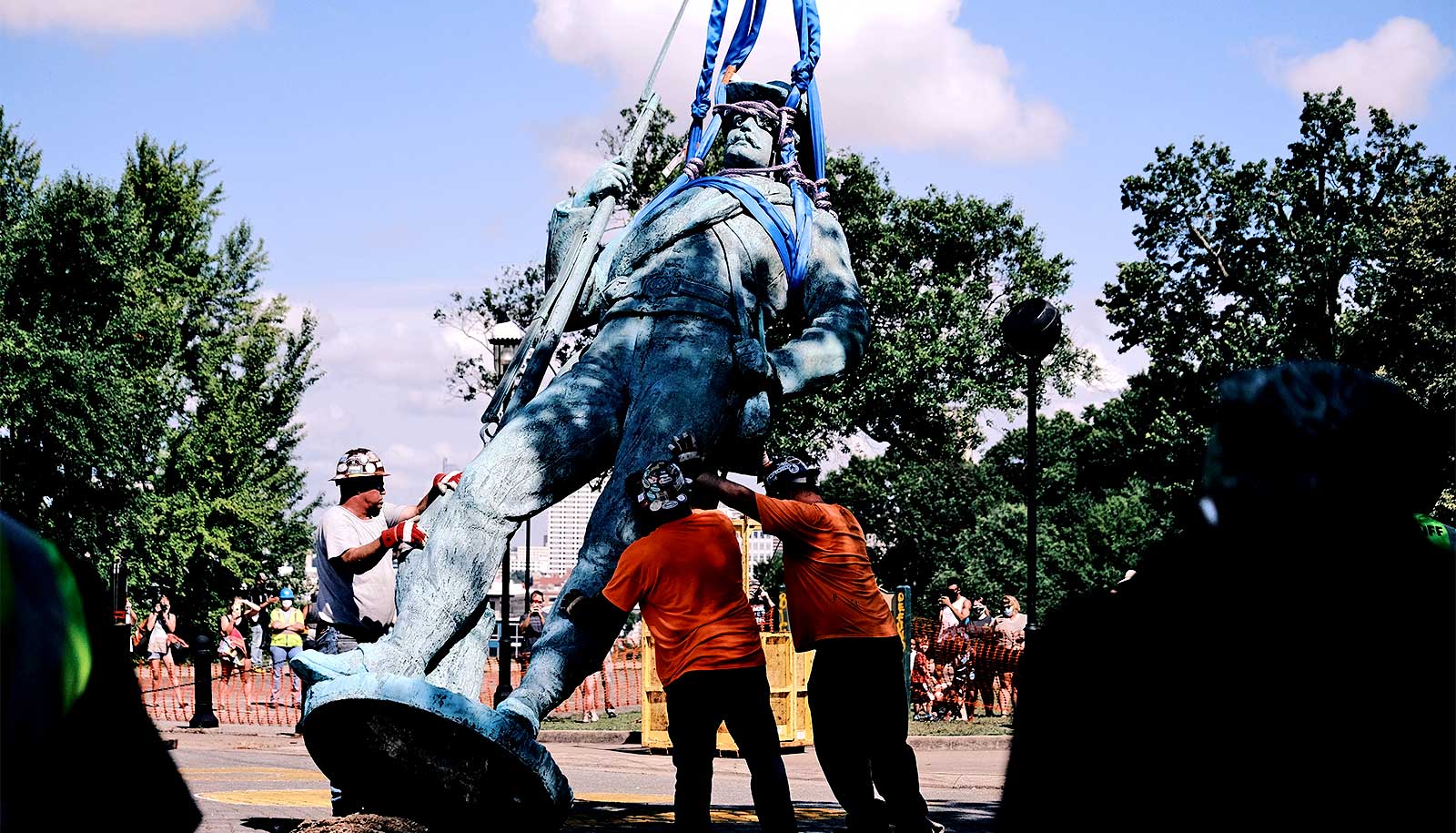In his new book, Nicholas Mirzoeff explains how visual culture has upheld white supremacy—through art, monuments, and surveillance—and offers ways to dismantle it.
The phrase “white supremacy” can evoke images of the Charlottesville rally, Confederate monuments, and police brutality. But what if white supremacy is also perpetuated through classic works of art, face masks, or drones?
According to Nicholas Mirzoeff, professor at New York University’s Steinhardt School of Culture, Education, and Human Development, all of these things fall under the purview of “white sight”—a system that centers the experience of those identifying as white onto the world, and positions whiteness as the default. Mirzoeff’s scholarship has addressed media depictions and related visuals of subjects including the Black Lives Matter movement and the Iraq War.
In White Sight: Visual Politics and Practices of Whiteness (MIT Press, 2023), Mirzoeff suggests that throughout the centuries, cultural icons such as sculptures of Apollo Belvedere and Venus de Milo contributed to a concept of beauty equated with whiteness, while Confederate monuments served to equate whiteness with power. These symbols, along with modern-day surveillance and the policing of non-white people, work together to reinforce a culture in which whiteness is upheld within a racialized hierarchy as “superior.”
If unchecked, Mirzoeff warns, the crisis of white supremacy will threaten social justice advancements on a global scale. Here, Mirzoeff talks about the evolution of white visual culture, present-day efforts to perpetuate white supremacy, and ways to dismantle oppression:
What is “White Sight”?
Within the framework of slavery and colonialism, what I call “white sight” is a relationship of ways of seeing, material infrastructure, and unconscious assumptions that together produce racialized hierarchies of space, cultures, and bodies. Central among the ways of seeing that I address is perspective, understood here as a technology of colonialism and white supremacy. While its theoretical form can be seen in any museum, its applied form was the surveillance practiced by the aptly named overseer on plantations. Assisting in the key functions of surveying and surveillance alike, this perspective is now deployed in decentered form via widespread video surveillance.
Since 2017, the role played by monumental statues and museums as infrastructures of white sight has become widely “de-invisibilized,” to borrow a term from feminist activist Verónica Gago. It made sense to participants in the 2020 George Floyd protests to remove Confederate and other racist monuments as a protest against police brutality because they understood them to be connected within the system of white sight. When police officers make decisions on how to act based on their perception of a person’s ethnicity, they unconsciously deploy a range of types and stereotypes. In explaining why he shot and killed 18-year-old Michael Brown, former police officer Darren Wilson claimed the teenager looked like a “demon” and the wrestler Hulk Hogan. He was not lying: white sight deploys such stereotypes as part of its projection of white reality. As this example shows, unbuilding it is sometimes a matter of life and death.
The book outlines “strikes” against white supremacy. How is a strike defined and what makes it successful?
Throughout this book, I call for a strike against white sight. It’s not the traditional labor strike, although seeing is certainly labor, because there are no terms and conditions for seeing. Instead, the strike against white sight refuses to carry on as “normal,” not accepting that there is “nothing to see here,” as the authorities will have it. It is not violent. Rather, those who strike would prefer not to participate in white ways of seeing.
To be clear, white-identified people join a strike against white sight which Indigenous, Black, and other people of color have been engaged in for centuries. The reason to strike is that if only one set of humans, who call themselves white, can be “great men,” gender intended, then everyone else is dehumanized. The strike against white sight intends to “un-dehumanize” all those excluded from and by white sight, meaning to bring to an end all processes of dehumanization.
Monuments and statues embody that way of seeing. Removing some of them has been an interim success for the strike against white sight. Further, there are now specific instances of material reparations being made to those harmed by white supremacy. Recently, the Guardian newspaper has announced a 10-million-pound-sterling program of reparations because of the involvement of its founders in slavery. Each time there is a success in one such zone, the strike moves on to the next. Its horizon is the abolition of all racialized hierarchies.
How would you describe current efforts to establish or maintain white visibility in the US?
While I began work in the midst of the resurgent white supremacy around Brexit, Bolsonaro, and Trump, I finished the book in the midst of a general crisis of whiteness. Statues had come down, museums had been challenged, and it’s now the border that is the infrastructure of white sight most in question. As a result, it’s vital not to think of these issues in one country, but transnationally. Today, there is a transnational moral panic to define whiteness as being transphobic or gender normative from the US to the UK and Russia.
One of the most prominent themes of present-day white anxiety has been the so-called question of “white replacement,” meaning the alleged replacement of white people by Jews, migrants, Black, Indigenous, and other people of color. In fact, this anxiety began as soon as the Haitian revolution successfully overturned slavery in 1804. It, nonetheless, feels urgent to significant numbers of white-identified people today.
What W.E.B. Du Bois called the “wages of whiteness,” such as privileged access to parks and public space, better education or job opportunities, appear to have been, as it were, devalued. Social media posts share the photographs of incoming Ivy League classes to create panic that they are not sufficiently white. My own book was attacked by bots claiming it advocated for “white genocide,” presumably meaning a genocide of white people, not a genocide committed by white people. Of course, it does not. It looks to unbuild systems. Genocides exterminate people.
You present the US as currently being at a crossroads, with one possible future leading to reformation for broader equality and another resulting in neo-Confederacy. What do you see as the catalyst for each outcome?
The “Make America Great Again” project continues to double down on white supremacy. Representative Marjorie Taylor-Greene has recently advocated for a separation of red and blue states, which is already in place after the Dobbs Supreme Court ruling on abortion ended bodily autonomy in most red states. On the other hand, the George Floyd protests were the largest in US history. There are clear goals for the unbuilding of white sight: removing racist monuments, repatriating cultural property, and making reparations and repair for the damage done.
In a sense, I welcome the directness of this encounter. Far from the supposedly deniable “dog whistle” of racism in the recent past, there is no avoiding it now. The determining factor here will not ultimately be federal elections, now resolved by the swing of a few hundred thousand votes in a handful of states.
The question to me is whether all of us white-presenting and white-identified people who went on marches, attended vigils, or simply posted support for the Black Lives Matter movement in 2020 will continue to adhere to the responsibility we took on then. It was clear then and now that it would be our responsibility to undo white supremacy. It was never going to be easy or quick. But what is remarkable is that we are even discussing it.
What do you hope readers will take away from your book?
For those of my readers who are identified as white, I hope they can see both the scale of the issue and how the general crisis of whiteness currently unfolding offers each person the opportunity to refuse to deploy white sight. For my Black, brown, Indigenous, and other people of color readers, I hope you will see both myself and my readers take on the work that remains—removing racist statues, repatriating artwork, engaging in repair, and finding other ways to see and be seen.
Source: NYU



